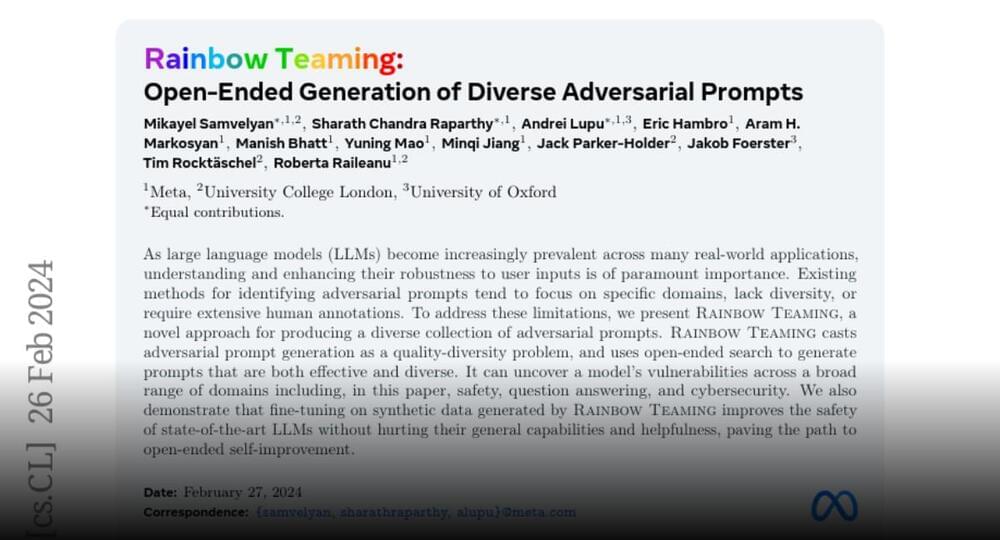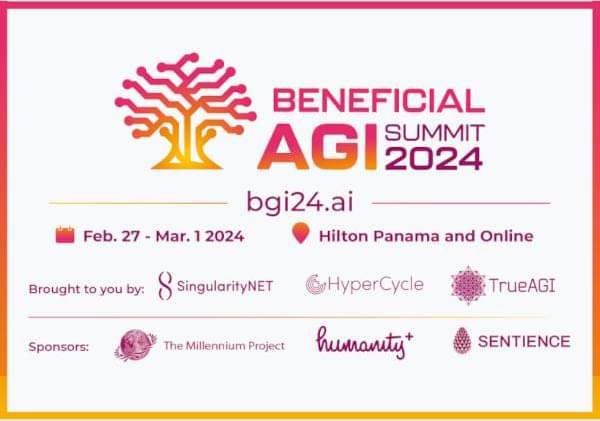Ederworlds & Bubble planets are artificial worlds held up by internal pressure, and can be several times larger than Earth.
Get the latest international news and world events from around the world.
Arditi Forging a New Man
To survive in the 3rd millenium we must evolve.



Beneficial AGI Summit & Unconference — Feb. 27/March 1, 2024
The “Beneficial AGI Summit & Unconference” is a new event organized by SingularityNet and TrueAGI in collaboration with others. The Millennium Project is one of the sponsors of the event and our Jerome Glenn, Executive Director and co-founder of The Millennium Project, and José Cordeiro, MP Board member and RIBER and Venezuela Nodes Chair, are members of the organizing committee of the event. The Beneficial AGI summit will take place both online and physically and c/o Hilton Panama in Panama City. The streaming is free, get your ticket.
The objective of the conference is to bring together the leading voices in AI in actions to catalyze the emergence of beneficial AGI. Key themes of the event are: Constitution & Governance Framework, Global Brain Collective, Simulation / Gaming Environments, Scenarios analysis process, Potential scenarios (from 1 to 7).
On the first two days of the BGI Summit, Feb. 27–28, top thought leaders from around the globe will engage in comprehensive, detailed discussions of a wide range of questions regarding various approaches to AGI and their ethical, economic, psychological, political, environmental and other implications. The focus will be on discussing issues, making conceptual progress, forming collaborations, and engaging in the practical actions aimed at catalyzing the emergence of beneficial AGI based on the ideas and connections set in motion by all involved.

Scientists Map the Largest Magnetic fields in Galaxy Clusters using Synchrotron Intensity Gradient
In a new study, scientists have mapped magnetic fields in galaxy clusters, revealing the impact of galactic mergers on magnetic-field structures and challenging previous assumptions about the efficiency of turbulent dynamo processes in the amplification of these fields.
Galaxy clusters are large, gravitationally bound systems containing numerous galaxies, hot gas, and dark matter. They represent some of the most massive structures in the universe. These clusters can consist of hundreds to thousands of galaxies, bound together by gravity, and are embedded in vast halos of hot gas called the intracluster medium (ICM).
ICM, consisting mainly of ionized hydrogen and helium, is held together by the gravitational pull of the cluster itself. Magnetic fields in large-scale structures, like galaxy clusters, play pivotal roles in shaping astrophysical processes. They influence the ICM, impact galaxy formation and evolution, contribute to cosmic ray transport, participate in cosmic magnetization, and serve as tracers of large-scale structure evolution.
Farewell to the Master | Harry Bates | Nightshade Diary Podcast
Story on which the film “The Day the Earth Stood Still” was based. Narrator and Producer MP Pellicerwww.MPPellicer.comSUPPORT VIA DONATIONBuy Me A Coffee — ht…

AI is Uncle Sam’s new secret weapon to fight fraud
Imagine that.
Uncle Sam has quietly deployed a new secret weapon designed to catch bad guys trying to steal from taxpayers: artificial intelligence.
Starting around late 2022, the Treasury Department began using enhanced fraud-detection methods powered by AI to spot fraud, CNN has learned.
The strategy mirrors what is already being done in the private sector. Banks and payment companies are increasingly turning to AI to root out suspicious transactions – which the technology can often do with lightning speed.

Space observatory in Chile unveils new maps of the universe
We are always making strides to unravel the mysteries of our universe. Now, a small observatory nestled in the Andes mountains of northern Chile has provided a snapshot of the cosmos in space. This one is clearer than we imagined.
The U.S. National Science Foundation Cosmology Large Angular Scale Surveyor (CLASS), spearheaded by astrophysicists from Johns Hopkins University, mapped a whopping 75 percent of the sky.

Insulin-inhibitory receptor research offers hope for type 2 diabetes therapy
Research targeting the insulin-inhibitory receptor, or inceptor, unveils promising avenues for beta cell protection, offering hope for causal diabetes therapy.
A novel study in mice with diet-induced obesity demonstrates that the knock-out of inceptor enhances glucose regulation, prompting its further exploration as a drug target for type 2 diabetes treatment.
These findings, led by Helmholtz Munich in collaboration with the German Center for Diabetes Research, the Technical University of Munich, and the Ludwig-Maximilians-University Munich, drive advancements in diabetes research. They have been published in Nature Metabolism.